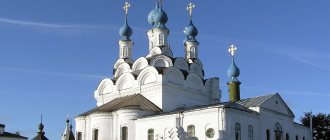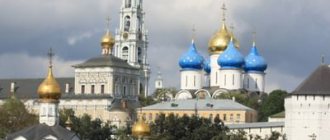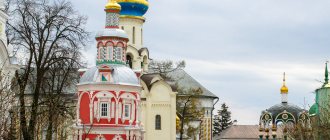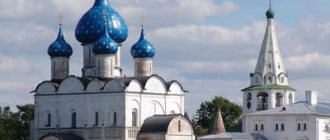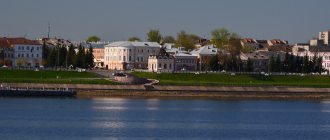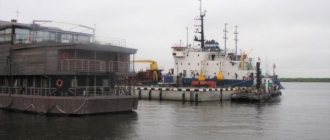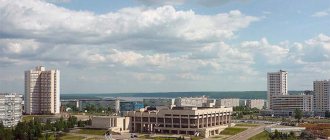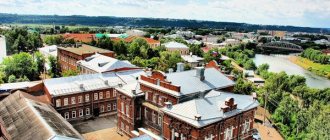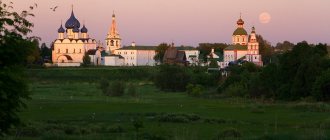Suzdal is the Golden Ring of Russia: all residents of our country have heard about it. It is also called the Pearl of the Golden Ring, as it contains many ancient and unique attractions. So much has been said about the city of Suzdal that probably every person has an idea about this place, even if he has never been there.
In this article I will tell you the unusual history of the city of Suzdal and give you a tour of its most beautiful sights. Are you ready for an exciting journey? Go!
Museum of Wooden Architecture
Along with Yuri Bychkov, Alexey Varganov and Valentin Anisimov should be considered the “godfathers” of tourist Suzdal. On the initiative of the former, the St. Nicholas Church was transported to Suzdal back in 1960, and Anisimov was the main ideologist of the concept of the Museum of Wooden Architecture. It was this museum, located right on the banks of the Kamenka River, that laid the foundation for Suzdal as a tourist Mecca.
The buildings collected in the Museum of Wooden Architecture seem to model the plan of a Russian village in the 16th – 19th centuries. The center of the exhibition is the square on which there are two churches and a bell tower. From the square there are streets lined with authentic houses from the 17th and 18th centuries. You can both outside and inside examine the huts of a wealthy peasant, the home of a farmer with a small income, and a rather monumental, by the standards of these places, merchant’s house with a stone ground floor.
The Museum illustrates the spiritual and everyday components of peasant life. A very informative tour of the ancient windmill, the setting of which has been recreated down to the smallest detail.
The barn, transported from the village of Moshok, housed a carpenter’s workshop and an exhibition of keys and locks. Locks and their keys seemed to serve as an indicator of prosperity. After all, it is unlikely that a forged key weighing more than two kilograms would lock a lock of the same size more securely than its brother that weighed half as much. Locks and their parts were made exclusively by forging. In the carpenter's workshop you can see wooden wedges, with the help of which logs were cut into planks back in the 19th century. It's not a matter of backwardness - saws were already known - chopped boards are much more durable. Just like wooden joints, nails were widely used only in the construction of roofs.
The churches located in the Museum, although they were built almost simultaneously by historical standards (Preobrazhenskaya in 1756, and Voskresenskaya in 1776), are different both outside and inside. The Transfiguration Church is built in a cross around the main quadrangular part with an altar. “Eights” were erected on it - octagonal elements that are crowned with three domes.
The Church of the Resurrection is built like a “ship” - the main room, the refectory and the bell tower are located one behind the other. The altars in both churches are classic three-row.
So that the attention of parishioners was concentrated on the icons, they were made the only decoration of the temples.
Suzdal Map
Official website of the city of Suzdal
Half a century ago, several major Soviet publications published a number of reports about the pearls of the Russian province.
It was then that the phrase “golden ring” was first heard, which was destined to become the main tourism brand of Russia.
Golden ring map.
Each city of the “golden ring” is an absolute gem, even against the backdrop of the rich natural and architectural beauties of central Russia. Ancient and full of charm, Suzdal belongs to one of the most important places here.
No wonder it is called the “glorious city of heaven” and “the cradle of Russian historical tourism.”
Frames with unique stone carvings, ancient wooden churches assembled without a single nail, wooden huts with openwork platbands and roof ridges - all this is collected here, in a very small and incredibly picturesque space.
Suzdal Map
Suzdal is beautiful at any time of the year. And even in spring, which is slack and sloppy, there are many cheerful tourists eager for fresh impressions.
Suzdal Kremlin
The Suzdal Kremlin was built in the Kamenka bend starting in the 11th century. Judging by the surviving descriptions, the center of the settlement was surrounded by high wooden ramparts, on which stood a wooden palisade made of pine logs. The highest fortifications were in the eastern part - where the settlement was not covered by Kamenka. Here they also dug a deep ditch in front of the rampart.
In 1719, the fortifications, having lost their relevance, completely burned out, and today only traces of earthen ramparts and a ditch remain.
Every cloud has a silver lining - there is now scope for viewing Kremlin buildings from a distance. Now the churches and the bishop's courtyard, located rather crowdedly, can be viewed from several sides.
Our Lady of the Nativity Cathedral
Five blue domes reach towards the sky from a massive quadrangular white stone base. This is the visiting card of Suzdal - the Cathedral of the Mother of God of the Nativity. At the time of construction, it was located in the middle of the Kremlin. By the 13th century, the cathedral had collapsed, and a new one made of white stone was erected in its place. This building stood for more than a century, until ruthless time, with the active help of the Kazan Tatars, began to take its toll again, destroying the upper part of the temple. Times were hard, and hands and money reached a new reconstruction only in 1530. Then the Nativity of the Mother of God Cathedral acquired its current form.
Despite the fact that the white color gives unity to the walls, upon closer inspection it is clear that the older lower part of the cathedral is decorated with carvings, and the top of the walls, completed by order of Vasily III, is devoid of decorations. The picture is the same inside - ancient frescoes were discovered on the lower part of the walls in 1938, but there are no paintings on the upper part.
The western and southern gates are an important monument of applied art. Although the western gate is called golden, it is actually made of wood covered with copper sheets.
On copper there are scenes on themes from the Holy Scriptures. The Royal Gates were also made using the same technique. They are additionally decorated with four lanterns and external crosses.
The interior decoration of the temple amazes with the abundance of gilding and painting. The iconostasis in five rows rises from the floor to almost the entire height of the room.
The side walls are decorated with images of saints and archangels. During the service, the combination of the visual impression of brightly illuminated icons in gilded frames and excellent acoustics creates an impression of grandeur and spiritual uplift.
Bishops' Chambers
The complex complex of buildings with white walls began to be built by Metropolitan Hilarion under Tsar Fyodor Alekseevich. Gradually, many extensions were added to the building, and now you can’t figure it out without a guide or a plan.
Metropolitan Platon in 1792 described his impressions of the chambers in the following way: “... the house is old, not small, and due to its antiquity, it looks important and suitable for a bishop’s stay; there are enough chambers in it; the hall is 10 fathoms long and 8 wide, without a pillar, the size of which is unlikely to exist anywhere in ancient times, but it’s a pity that it was recently partitioned off and thereby reduced, and what was special about it was taken away.”
The complex of the Bishop's Chambers is crowned by a bell tower with a clock that chimes every quarter of an hour.
The dial has letters instead of numbers.
Nowadays, the main part of the chambers is occupied by a museum exhibition about the history of Suzdal.
St. Nicholas Church
A hundred meters from the splendor of the Nativity Cathedral and the Bishop's Chambers, closer to the river, stands an unprepossessing wooden church. It is called Nikolskaya and was moved to Suzdal from the village of Glotovo. The village is famous for the fact that, according to an unconfirmed legend, the first of the Romanovs, Mikhail, was born there.
St. Nicholas Church consists of three log buildings, surrounded on three sides by an elegant covered gallery, and topped with a sharp gable roof with a small dome.
Assumption Church
The full name of this temple, located on the territory of the Suzdal Kremlin, is the Assumption Church on the Prince's Court. It stands on the site of the courtyard in which Ivan III lived. The temple was erected in the middle of the 17th century. It is quite unusual for Suzdal, standing out with its red walls and layout. The refectory is attached to the main building sideways, and a bell tower is attached to it at the end.
The interior of the Assumption Church is also atypical for local churches. It consists of a five-row gilded iconostasis and beautiful frescoes on the walls and ceiling. This style of architecture is called Moscow Baroque.
Monasteries of Suzdal
Historians and local historians disagree about how many monasteries the history of Suzdal includes - either 15 or 12. The rather turbulent history of the city in the 13th - 15th centuries, and especially the first years of Soviet power, also adds to the confusion. In those years, no one tried to understand the historical or artistic value of the buildings, and it was good if the monastery was turned into a power plant or a cinema. The Trinity Cathedral of the Deposition of Robe Monastery, which was the main decoration of the city, was simply blown up. Now there are 5 monasteries on the territory of Suzdal.
Monastery of Saint Euthymius
At one of the bends of Kamenka, in the northern part of Suzdal, the Spaso-Evfimiev Monastery was founded in 1352. Contrary to the canons of that time, it was located not inside the bend, but at the outer edge of its bend, that is, the river covers not three, but only one side of the monastery.
The Spaso-Evfimiev Monastery is much more like a Kremlin than the Suzdal Kremlin. It is surrounded by a thick brick wall, and the buildings inside the perimeter are built to form another line of defense.
However, there was no need to defend the monastery. The only battle near its walls took place in 1445, when the Tatar army defeated the Russian army under the command of Prince Vasily II.
Since then, the monastery has either partially or completely served as a prison. Its walls saw schismatics, Decembrists, “political” Tsarist and “political” Soviet, interned Czechs and captured fascists, including Field Marshal Paulus. After the Great Patriotic War, juvenile offenders served their sentences in the Spaso-Evfimiev Monastery.
On the territory of the monastery there are a number of architectural and historical monuments: the Transfiguration Cathedral, the Annunciation, Assumption and St. Nicholas churches, a belfry, a prison castle, the Brotherhood cell building and monastery towers.
The exhibitions “Golden Pantry”, “Russian Icon of the 17th – early 20th centuries”, “Blagovestniki. Bells of the 18th – 20th centuries”, “Book treasures of six centuries”, “History of Suzdal monasteries”, etc. A special exhibition is dedicated to Prince Dmitry Pozharsky, who commanded the people’s militia that drove the Poles out of Moscow in the Time of Troubles - D. I. Pozharsky is buried on the territory monastery
Deposition of Robe Monastery
This convent was founded at the very beginning of the 13th century; it is considered one of the oldest in Russia. However, the oldest surviving monuments date back to the 16th century - it was then that the first stone building was built on the territory of the monastery.
The Deposition of the Robe Monastery suffered especially badly during the years of Soviet power. In addition to the cinema and power plant, it also housed a branch of the OGPU, whose workers were especially vicious in destroying icons, books and religious buildings. During the reconstruction, which has been ongoing since the 1970s, only the Deposition of Robe Cathedral, the Venerable Bell Tower, the Holy Gate and the Refectory Church of the Presentation have so far been completely restored. Yes, and they are under permanent renovation.
The Cathedral of the Deposition of the Robe was built with personal money by the boyar Ivan Yurievich, close to Vasily III, Shigona-Podzhogin. Despite its external simplicity (a three-domed white building with three false domes and an attached porch), the cathedral was decorated very richly. All decoration was lost in the 1920s.
It’s worth visiting the Deposition of Robe Monastery just for the view from the Venerable Bell Tower. From a height of 75 meters, tiny Suzdal and its surroundings open up in full view.
Pokrovsky Monastery
The Intercession Convent was founded by Suzdal Prince Andrei, who barely escaped a storm on the site of the future monastery in the middle of the 14th century. At the beginning of the next century, another prince, Vasily III, with a distant aim, donated a large sum to the convent for development, in modern terms. After waiting until the construction of the Intercession Cathedral was completed, Vasily exiled his wife Solomonia here, accusing her of infertility. Subsequently, many representatives of noble families followed the path trodden by Solomonia, some for misdeeds, some simply to live out their widowhood.
The monastery actually received a privileged status and became one of the pearls of Suzdal. The troubles of the twentieth century did not pass him by. The placement behind the thick walls of the OGPU Biological Laboratory helped - the monastery did not suffer any special destruction. Already in the 1950s, the first museums opened here, and in the 1980s the tourism infrastructure developed with all its might. After the resumption of work of the monastery, secular tourists are greeted here with reluctance - you cannot take photographs of people, you can only move along designated paths, etc.
The center of the monastery is the Intercession Cathedral.
The white two-story building, crowned with three domes, is adjacent to three asps and a bell tower connected to the main building by a gallery.
A similar gallery surrounds the main building. The main external decoration of the cathedral is the white color of the walls - the carvings are hardly noticeable, and the windows are made in the form of semicircular arches.
At the same time, the cathedral also served as a mausoleum - women were sent to the monastery for life, and their lifetime status required special treatment even after death, so they were buried in sarcophagi in the semi-basement.
Also preserved in the Intercession Monastery are the Refectory Chamber with the Conception Church, the Holy Gate and the Annunciation Church (XVI century), and the later Prikaznaya Izba, a cookhouse and a stone fence with eight semicircular towers.
Alexander Monastery
This monastery was founded by Alexander Nevsky with the goal of sheltering orphans and widows of soldiers killed in battle. Unfortunately, there have always been enough such widows and children in Rus'. They donated money to the monastery, assigned inheritances and estates. Prosperity came to an end during the Time of Troubles - it was destroyed by the Poles. They destroyed it so thoroughly that no attempt was made to revive the monastery. Only the Church of the Ascension was rebuilt - a roof with five domes was erected on a powerful quadrangle and a bell tower was placed next to it.
The monastery resumed work only in 2006.
Suzdal - the golden ring of Russia
Many works have been written about this amazing city - I want to share with you an excerpt from one of my favorite poems. The poet Pavel Smirnov saw Suzdal this way:
Here, sweet mead, soft hops will suddenly turn into joy for the soul, open a door to the world of warmth and light and respond with a song in every heart.
The cities that form the ring include beautiful Suzdal. It has no equal in terms of the number of architectural historical monuments. This city is a nature reserve with more than a thousand years of history, which stands on the Kamenka River. And such unique objects of ancient architecture that have survived to this day cannot be found anywhere else.
Suzdal is located in the Vladimir region: this small town is very friendly with well-groomed quiet streets and famous ancient architecture. The population of the city of Suzdal is 11 thousand people.
Suzdal is one of the most vibrant ancient cities in our country. You ask: “How old is the city of Suzdal?” I answer: it is already more than 990 years old.
Suzdal is the Golden Ring of Russia, it preserves the memory of the great Russian people and is famous throughout the world for its ancient history and numerous attractions.
In Suzdal you will not see tall buildings, because the construction of buildings higher than two floors is prohibited here. This is done so that from anywhere in the city you can see all the beauty of the temples and monasteries.
Sights of the city of Suzdal
Outside the city, a large entertainment center for tourists was built - the Main Tourist Complex (GTK). Five-story buildings, hotels, concert halls, swimming pools, bars and restaurants were erected there.
There is not a single large industrial enterprise in the city, but there are many small industries that can satisfy the needs of a small city: a dairy plant, a bakery, a clothing factory.
Suzdal is considered environmentally friendly. The local population of the city is engaged in growing crops, floriculture and raising livestock.
Suzdal - the city of the Golden Ring of Russia
The city is home to an agricultural research institute, where new varieties of grain crops and potatoes are constantly being developed. Here they are engaged in breeding pedigree meat - dairy cattle.
Currently, all educational institutions have been moved to the city of Vladimir, since Suzdal has been given the status of a museum city. It abounds in various places of recreation and entertainment: it has museums, parks, monasteries, fairs on the central streets of the city.
During the Soviet years, many existing Orthodox churches were destroyed. Now services are held in the restored churches again: the domes are shining again, and the ringing of bells can be heard over Suzdal, because it is one of the religious centers of Russia.
City of Suzdal, Vladimir region: Holy Intercession Monastery
Tourists from different countries, coming to the city, admire the ancient buildings, take souvenir photos, and buy souvenirs: wooden spoons and boxes, painted nesting dolls, magnets with city landscapes. Also, all travelers must try the local mead.
The famous Suzdal mead is a symbol of the city. It is sold in all stores and at numerous fairs during the holidays. This unique tasty drink is in great demand among tourists. By the way, mead is made only from natural ingredients. Find out about the main holiday City Day in Suzdal.
Trade area
In Suzdal it is difficult not to miss any attraction, there are so many of them. But no one will miss the Trade Square - this is the real center of the city.
The long passage in the Empire style was built at the beginning of the 19th century. At that time, the covered gallery was located only on one side of the building; there were warehouses on the back. Already in Soviet times, the passage was made double-sided, and with the development of market relations, the Suzdal shopping arcades turned into a tourist market, where you can buy a couple of famous pickles and expensive souvenirs.
Nearby on the square stands the Church of the Resurrection, in which scenes from the film “The Marriage of Balzaminov” were filmed.
Excursions around the city of Suzdal
Suzdal is a developed tourist center, so excursions around the city are conducted by experienced guides who know the history of Russia and various foreign languages. By prior arrangement, tours can be conducted in English, French, German and other languages.
The small town contains a huge history, so the services of guides are always in demand here: both individual tourists and numerous excursion groups can go on excursions.
Every day, guides conduct dozens of excursions, which are complemented by traditional Russian cuisine, folklore gatherings with mead and a bathhouse.
By the way, mead in Suzdal is very tasty and is in great demand! It is made industrially and manually - all tourists are sure to stock up on it for future use)) There is even an annual holiday in honor of this drink - the Mead Festival.
Excursions around Suzdal and its surroundings can be in different price categories. There are very inexpensive sightseeing tours where you can get to know the city and dive deep into its history. To search for the most interesting and budget excursions around the world, I use the Musement service.
Zarechnaya side
Not everything that you need to see in Suzdal is located on the left bank of the Kamenka - the right bank, more often called Zarechye, is also not without attractiveness. Here is the Church of Boris and Gleb, the second red temple in Suzdal. It, like the Assumption Church, was built in the Moscow Baroque style. They wanted to demolish the Church of Boris and Gleb back in the 1930s, but it survived miraculously. The church was transferred to the Russian Orthodox Church only in 2014, and to date, restorers have restored only the cladding of the building.
Also in Zarechye there is the Church of Cosmas and Damian. In the 17th century, a wooden church stood in its place, and by 1725 local residents raised money for a stone church with a high bell tower.
This church seems to combine two architectural traditions: the main building is built in the form of a cube, but the architecture of the bell tower seems to pay tribute to the local style - it is a typical “octagon on a quadrangle,” that is, an octahedron placed on a quadrangular ground floor.
What to see and where to visit in Suzdal
In the crowd walking in Suzdal, you rarely see an indifferent person. Here everyone finds a place and activity to their liking. These are experts in the field of antiquity and connoisseurs of church architecture, lovers of outdoor walks and connoisseurs of Russian cuisine.
Despite the severity of the forms of northern temple complexes and monasteries, there is an amazing lightness and soulful feeling here, as if you are touching something very dear and unusually close.
Clean air and beautiful nature, ancient architecture and genuine antiquity make Suzdal one of the outstanding resorts in the Russian province. The energy of this land makes people come back here again and again.
Kideksha
A small village a few kilometers from Suzdal downstream of the Kamenka, at its confluence with the Nerl, was for some time a strategic point. Here was the residence of Yuri Dolgoruky, who preferred to live outside the city. But the main attraction of Kideksha is the first white stone temple in North-Eastern Russia. This is the Church of Boris and Gleb, built in 1152. Of course, the single-domed temple has changed since its construction, but its appearance still reminds us how harsh life was here. It seems that in order to turn a church into a fortress, it is enough to close the narrow windows and turn them into loopholes.
In the village with a population of 140 people, monuments from the later 18th century have also been preserved - the Tent Bell Tower and the Church of St. Stephen.
Brief history of the city of Suzdal
Suzdal is distinguished by a happy fate in the history of our country. The origin of the city is described in the chronicles: for the first time we learn about it precisely from these historical documents, which indicate the year of foundation of the city of Suzdal - 1024.
At that time it was part of the Principality of Kyiv. Developing rapidly, by the middle of the 11th century Suzdal became a major trade and craft center.
Origin of the city of Suzdal
Archeology confirms that Suzdal is indeed more than a thousand years old: excavations were carried out along the banks of the Kamenka River, where the remains of defensive structures were found.
Throughout its long history, the city of Suzdal has undergone many troubles and battles. In the 13th century, almost the entire local population died as a result of an attack by barbarians: the Tatar-Mongols completely plundered the city and then burned it.
The local population was destroyed and captured. Only a few residents were able to hide behind the walls of the Deposition of the Robe Monastery, thereby saving their lives. Then there were big fires, epidemics and attacks by the Crimean Tatars - from all the battles and battles the city emerged victorious, reviving again.
Despite all the disasters, Suzdal managed to preserve unique ancient monuments to this day.
We all know the great names associated with the Suzdal land: Yuri Dolgoruky, Dmitry Pozharsky, Alexander Nevsky, Alexander Suvorov - each of them left their mark on history.
Suzdal is one of the many glorious pages in the history of the Russian state. This is a city that you can’t help but fall in love with – and you will agree with me once you get acquainted with its sights.
Sloboda Skuchilikha
The etymology of the name of this small piece of little Suzdal is unclear, but it is worth exploring. Firstly, there are residential buildings built almost from the 18th century, and secondly, the Church of the Smolensk Icon of the Mother of God is perfectly preserved.
And Skuchilikha is located not far from the Spaso-Evfimiev Monastery.
